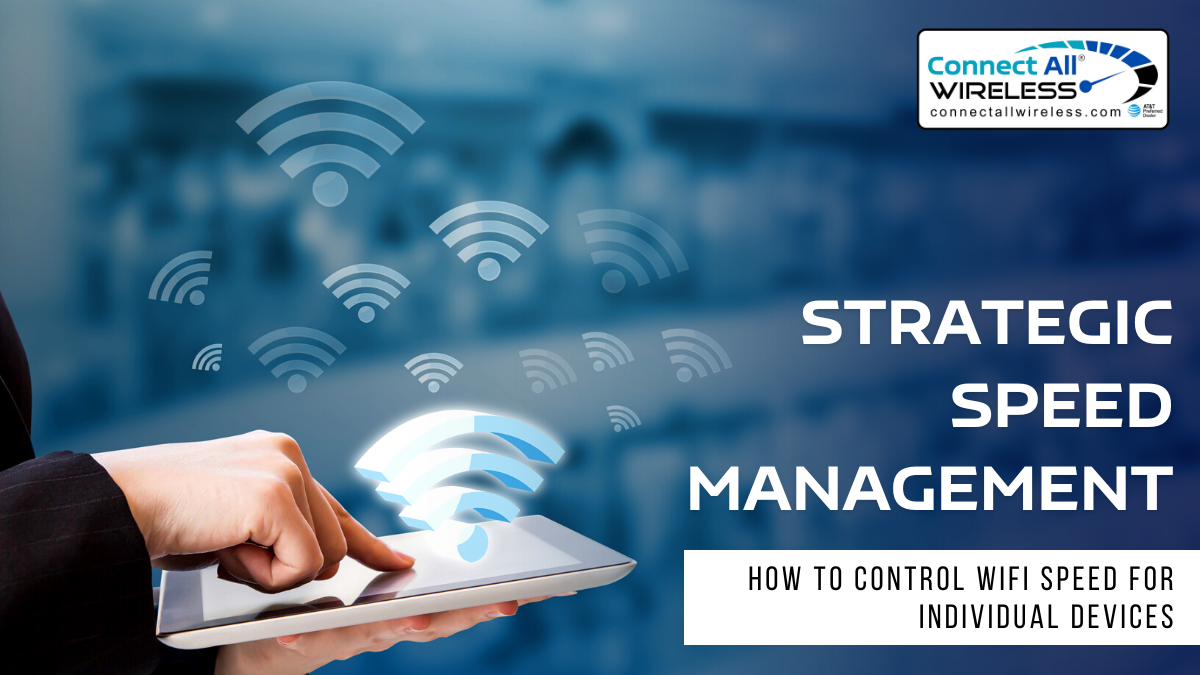
In the fast-paced world of technology, where our lives are increasingly dependent on seamless connectivity, managing WiFi speed has become a critical aspect of ensuring a smooth online experience. As more devices connect to a single network, the need for strategic speed management has never been more apparent. In this blog post, we'll explore the challenges associated with WiFi speed, the importance of controlling it for individual devices, and effective strategies to optimize your network for a better online experience.
Understanding the Challenge: The WiFi Speed Conundrum
With the proliferation of smart devices, IoT gadgets, and the increasing demand for high-quality streaming and online gaming, home networks are under constant strain. The limited bandwidth available to a household can lead to a noticeable slowdown in internet speed, especially during peak usage times.
The challenge lies in the fact that not all devices on a network require the same amount of bandwidth. While a smart thermostat or a light bulb might need minimal data, a 4K streaming device or a gaming console demands a much higher data rate. The inability to allocate bandwidth efficiently can result in frustration, lag, and disrupted online activities.
The Importance of Individual Device Speed Control
Controlling WiFi speed for individual devices is crucial for several reasons. First and foremost, it allows users to prioritize critical devices that require a stable and high-speed connection. For example, a work laptop used for video conferencing or a gaming console should be given priority over less critical devices like smart home sensors.
Secondly, managing WiFi speed ensures a fair distribution of bandwidth among all connected devices. This prevents a single device from monopolizing the available bandwidth, leading to a more equitable and satisfactory online experience for all users in the network.
Strategies for Strategic Speed Management
-
Quality of Service (QoS) Settings: Many modern routers come equipped with Quality of Service (QoS) settings, allowing users to prioritize certain types of traffic. By accessing your router settings, you can assign higher priority to devices that require a faster and more stable connection. This ensures that essential activities like video calls or online gaming get the bandwidth they need.
-
Device-Specific Bandwidth Allocation: Some advanced routers allow for device-specific bandwidth allocation. This feature enables users to manually assign a certain percentage of the total bandwidth to individual devices. By tailoring the allocation based on the device's requirements, you can prevent one device from overwhelming the network.
-
Parental Controls and Guest Networks: Utilizing parental controls and setting up a separate guest network are effective ways to manage WiFi speed. Parental control features often include the ability to limit the internet speed for specific devices, ensuring that children's devices, for example, do not consume excessive bandwidth. Meanwhile, a separate guest network prevents guests from affecting the speed of the main network.
-
Regular Network Monitoring: Periodically monitoring your network's performance can help identify devices that might be consuming an undue amount of bandwidth. There are various tools and apps available that provide insights into your network's activity, allowing you to make informed decisions about speed allocation.
-
Firmware Updates: Keeping your router's firmware up to date is essential for optimal performance. Manufacturers often release updates that include bug fixes and performance improvements. By regularly updating your router's firmware, you ensure that it can efficiently implement speed management features.
Conclusion: A Balanced Approach to WiFi Speed Management
In the realm of digital connectivity, mastering strategic speed management within your home network is paramount. By understanding the nuances of WiFi speed allocation for individual devices, achieving a harmonious balance becomes feasible. With the demand for high-speed WiFi in Michigan and beyond, implementing tactics such as Quality of Service settings, device-specific bandwidth allocation, and vigilant network monitoring proves instrumental.
The importance of controlling WiFi speed for individual devices cannot be overstated. It ensures an equitable distribution of bandwidth, prioritizing crucial tasks like video conferencing or gaming over less demanding activities. Leveraging tools like parental controls and guest networks offers added control, optimizing the network for a seamless experience.
Ultimately, maintaining a well-managed WiFi network isn't just a matter of convenience; it's a necessity in a world where digital interactions and connectivity reign supreme. By embracing these strategies, users in Michigan and across the globe can harness the full potential of high-speed WiFi, ensuring an enhanced online experience for every connected device within their networks.

No comments yet